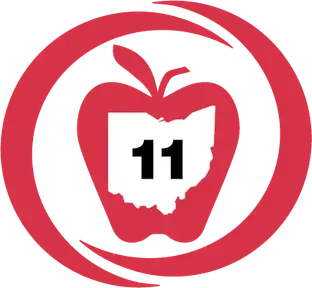SST 11 Podcast | Ep 05 | Secondary Reading Tiered Fidelity Inventory (RTFI)
Download MP3Eric Neal:
Hello, and welcome to the State Support Team 11 Podcast. I'm Eric Neal. And today, we are joined by Kim Brown. How are you today, Kim?
Kim Brown:
I'm doing great, Eric. Thanks for asking. How are you?
Eric Neal:
I'm good. Hanging in there, getting used to working remotely and all of this fun stuff. Keeping it moving.
Kim Brown:
Yeah, same here.
Eric Neal:
Great. Well, tell me a little bit about the work you do here at the State Support Team.
Kim Brown:
Well, I'm one of the consultants who supports districts and community schools and their school improvement efforts using the Ohio Improvement Process. And I also work with schools and districts to provide support in their adolescent literacy improvement efforts.
Eric Neal:
Great. So today we have you here talking about the secondary RTFI. What is an RTFI?
Kim Brown:
Well, RTFI stands for Reading Tiered Fidelity Inventory, and it was created by Michigan's Integrated Behavior and Learning Support Initiative. So it's essentially a tool that schools and districts can use to assess the implementation of their School-Wide Content Area Reading Model, and that basically consists of structures and practices that they have in place to improve reading outcomes for students. So it's purpose really is to help educators consider what needs to be improved upon, what might need to be implemented, and really how to address students' learning needs. And it's also mentioned in the Ohio's Plan to Raise Literacy Achievement as a tool to assess those strengths and weaknesses really in implementing a multi-tiered system of supports for language and literacy.
Eric Neal:
Got it. That sounds a lot like the Tiered Fidelity Inventory that schools who are implementing school-wide PBIS are using, are they similar?
Kim Brown:
Yeah, actually they are. I like to think about them as siblings. So one tool, the TFI is used to address climate and culture. So the RTFI is used on the other side of the MTSS pyramid to assess the implementation of reading components in, like I mentioned before, the School-Wide Content Area Reading Model. So like the TFI, the RTFI is used by teams to examine data, programs, and practices that should elicit deeper discussions around those supports, around instruction and intervention for students. So for schools and districts already utilizing the TFI to examine climate and culture, it would be great to add the RTFI to support the academic side of the MTSS model.
Eric Neal:
Right. Yeah, one thing I've noticed from doing this type of work for a really long time is that people are working hard and they meet and they have tons of meetings, but when you have something that helps frame the discussion and really guide you through asking those deeper questions, you really are able to get a lot more done in a shorter amount of time. It really does keep everybody focused.
Kim Brown:
Absolutely. It keeps everyone focused and on task and you really get the outcomes of those discussions that you're looking for.
Eric Neal:
Right. So what are some examples of questions you would find on the RTFI?
Kim Brown:
Well, so the RTFI measures how your team functions, it measures implementation, resources and evaluations. So teams would score themselves on a scale of zero, one, or two, according to criteria. And zero means it's not in place, one, it means it's partially in place, and two means that it's fully in place. So a tier of... Excuse me, a team function question or statement would be the school leadership team's work is coordinated with other school teams. And so the team working with this would rate themselves a zero, one, or two.
Kim Brown:
An implementation question or statement would be an instructional routine is available for each content area reading strategy that has been adopted for school-wide use. A resources question or statement would be the school altars intervention variables, so that would be like increased instructional time or smaller group size to intensify reading intervention supports. And an evaluation question or statement would be the school monitors data on student access to reading intervention supports.
Eric Neal:
Okay, so that sounds really detailed and like it really would get you having your deeper conversations. And you mentioned that this is aligned with the academic side of the MTSS pyramid. Is it strictly for your tier one program or can it help you identify holes in your tier two and three also?
Kim Brown:
Well, no and yes. So to begin, the RTFI definitely helps the team identify what's in place for tier one or what's needed, what's working well and meeting the needs of 80% to 85% of all students, or what is not. But the beauty of using the RTFI is that it can also address whether not the needs of that 15% to 20% of students who might fall into tier two or tier three are being met and how well. So then those deeper discussions that you were talking about can be elicited really by looking at that data and can help teams think about the best ways to meet those students' needs in the classroom. What practices, strategies, or programs need to be implemented, or even if there are some scheduling considerations that the building leadership team and administration can make.
Eric Neal:
That sounds like that really would be helpful.
Kim Brown:
Oh, absolutely.
Eric Neal:
Yeah. So how was the secondary RTFI different from the elementary version of the RTFI?
Kim Brown:
So, right, there are two versions and the purposes and the underlying philosophies are the same, but the teams who use the assessment tool would be different of course. The data that the teams used would be different because one would be for elementary, one for secondary, and so therefore, the discussions would be a bit different. Some of the questions vary so as to address the literacy needs of an elementary student versus an adolescent. However, Eric, if schools and districts use both, they have the advantage of examining their literacy programs and practices across K-12 and they can align their curriculum across K-12 based on standards and evidence-based practices.
Eric Neal:
That makes a lot of sense. Having MTSS as your foundation to really make sure that you're covering both the climate and culture and academic side of everything, it can only be helpful when having tools that help you do that really is the key to being successful. And is there any connection between the information that you find out doing the elementary RTFI or the secondary RTFI that connects to the TFI information that you find out in the PBIS, half of the MTSS pyramid?
Kim Brown:
Oh, absolutely. Sure. So, the purpose of MTSS is to ensure high levels of academic and social success, right? So I think the combination of the two is so important, especially for adolescents because they're so closely related and one really does affect the other. So the RTFI can help teams evaluate or choose a curriculum instructional practices or interventions that would meet the needs of students right in front of you. And the results of the RTFI and the TFI together can tell a much richer and complete story about the needs of those students.
Kim Brown:
So when I think back about, or think back to some of my students, student behavior manifestations could be a result of academic frustrations around reading, right? So for a 16 year old adolescent experiencing reading challenges that have not been met, he or she may exhibit frustrations in negative ways in the classroom. I'm sure a lot of you can relate to that. So if those reading issues continue to go unaddressed, then we know they can cause problems in peer relationships, professional relationships down the road, and of course, those students will continue to experience academic challenges that can limit their future opportunities.
Eric Neal:
Yeah, that makes a lot of sense. And I think that's probably why they explicitly ask you in the tool, how are you coordinating communication between all of these different needs and different people?
Kim Brown:
Right.
Eric Neal:
So, yeah, it definitely makes sense.
Kim Brown:
Right, we get a much fuller picture of the students sitting right in front of us day to day.
Eric Neal:
Absolutely. So if you're interested in finding out more about the secondary RTFI and how they use it, where should you go?
Kim Brown:
The website is actually a great place to go. So again, it's Michigan's Integrated Behavior and Learning Support Initiative website, and that website address is miblsi.org.
Eric Neal:
Great. I know we are developing learning opportunities for schools and districts in the future, but what can someone do if they want to support getting started in this right now?
Kim Brown:
Well, they can definitely go to that website and get more information, but they can also absolutely contact me by email. My email is kimberly.brown@escco.org, or they can contact me by phone, and that number is (614) 753-4169, and I'd be happy to meet in the most convenient way possible and give more information about the RTFI. Absolutely.
Eric Neal:
Great. So this sounds like a great tool for teams who are serious about getting the most out of their secondary literacy programs. All right, so that wraps up this episode of the State Support Team 11 Podcast. Once again, I really want to thank Kim for joining us today and sharing all of that great information about the secondary RTFI. If you'd like to contact me, you can reach me at eric.neal@escco.org. For more information about the State Support Team 11 and what we do, go our website. It's sst11.org. You can call us at 614-445-3750, or hit us up on Twitter @SSTRegion11. Until next time. I'm Eric Neal, and thanks for listening.


